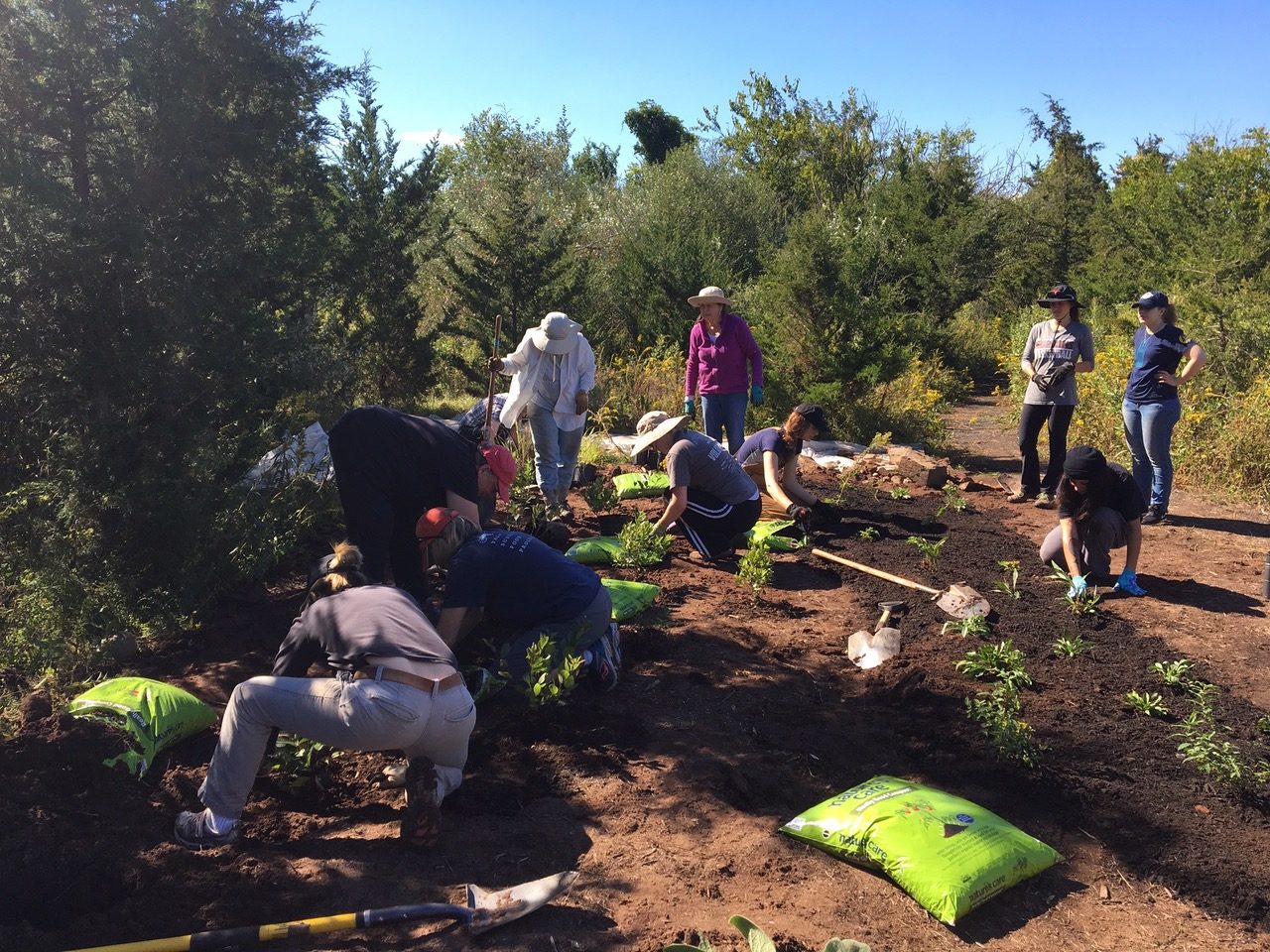
Courtesy of Lisa Lovejoy
Late in September, a group of volunteers gathered at the Quinnipiac Meadows nature preserve in New Haven to plant a host of native flowering plants, shrubs and grasses at the site.
Their objective? To make the area more attractive to pollinators.
On Sept. 29, a group of around 15 volunteers gathered to plant the pollinator garden at Quinnipiac Meadows, which is owned and managed by a local nonprofit called the New Haven Land Trust. The project was spearheaded by the Land Trust and by the Garden Club of New Haven. Susan Anton, the vice president of the Garden Club, told the News that the garden is part of a larger effort to revive the area, which she said has been historically mismanaged and plagued by invasive plant species.
“It’s a classic example of a heavily disturbed and invasive-ridden area with a lot of interesting history and a lot of promise,” Anton said.
Because shoreline sites — including marshland — were not viewed as prime real estate or treasured public lands in the 19th century, Anton said, many ended up becoming dumping grounds or construction storage sites. A report on Quinnipiac Meadows released by a group of students from Yale’s School of Forestry earlier this year emphasized the reserve’s troubled history. According to the report, ditches dug into the marsh in the early 1900s lowered the area’s water table. These ditches were created to lower the risk of mosquito-borne diseases, but the elimination of the insects’ breeding grounds also degraded other species’ habitats. And, in the late 1960s, a large portion of the marshland was filled with a type of “bright sediment,” leading to a rare coastal forest on the 35-acre site.
The planting of a pollinator garden comes as the number of pollinators — such as bumblebees, honeybees, butterflies, moths and some types of birds — in the region continues to decrease.
Kimberly Stoner, who is an entomologist at the Connecticut Agricultural Experiment Station in New Haven, said that about 85 percent of plant species need pollinators for sexual reproduction.
“[Pollinators are] a huge part of the ecosystem,” she told the News.
Stoner said that a number of factors were responsible for the much-discussed declining populations of pollinators. Bumblebee populations, for example, are declining in the Northeast and worldwide, she said.
According to Stoner, climate change has contributed to their population decrease. With warming temperatures, bumblebees have lost some of their southern range but have not been able to expand their range to the north.
“They’re getting squeezed by climate change,” she added.
Honeybees, Stoner said, have always been challenged by the use of pesticides and by declining flowering resources. But since the 1980s, she said, the population has also been threatened by a parasitic mite called the varroa mite, which acts in combination with several viruses that target the population. She added that some of the honeybee viruses seem to be spreading into bumblebee populations.
Laying the groundwork for the garden took time, Anton said. First, the Land Trust selected the site, which was later evaluated by experts, including a soil expert. The first work day on the site involved clearing the area of invasive species — a tricky task, Anton said, given that it can be difficult to keep invasive seeds left in the soil from germinating even after an area is cleared. To prevent this, the volunteers covered half the area with cardboard and wood chips and the other half with plastic that prevents the invasive seeds from sprouting. After five months of this process, Anton explained, the site was ready for planting.
The Land Trust’s preserves coordinator Cori Merchant said the preserve’s garden may be atypical because the goal was not to create a site for people to walk through. In addition to the planting of native plants and shrubs, she said, the garden will eventually include open patches of dirt, plant matter and woody debris.
“It’s not just about pollinator food,” she said, noting that it was also critical to create spaces for nesting and habitats.
The site is also an Audubon bird sanctuary, which Anton said was a major factor in selecting plants for the garden, because the group wanted plants that would also support birds and wild animals in the area.
Wide-ranging effects of projects like pollinator gardens on overall pollinator populations are tough to research, Stoner said. She added that there have been some studies, particularly in Britain, that show pollinator gardens can increase the survival of bumblebee colonies from one year to the next.
A landscape professional can help bring your vision to life, look at here now to contact one.
Both groups involved in planting the pollinator garden received outside grants to fund their work. The Garden Club received a Partners for Plants grant from the Garden Club of America, one of the group’s two umbrella organizations. For their part, the Land Trust received a grant from the Quinnipiac River Fund.
Quinnipiac Meadows is one of six preserves owned by the New Haven Land Trust.
Talia Soglin | talia.soglin@yale.edu







